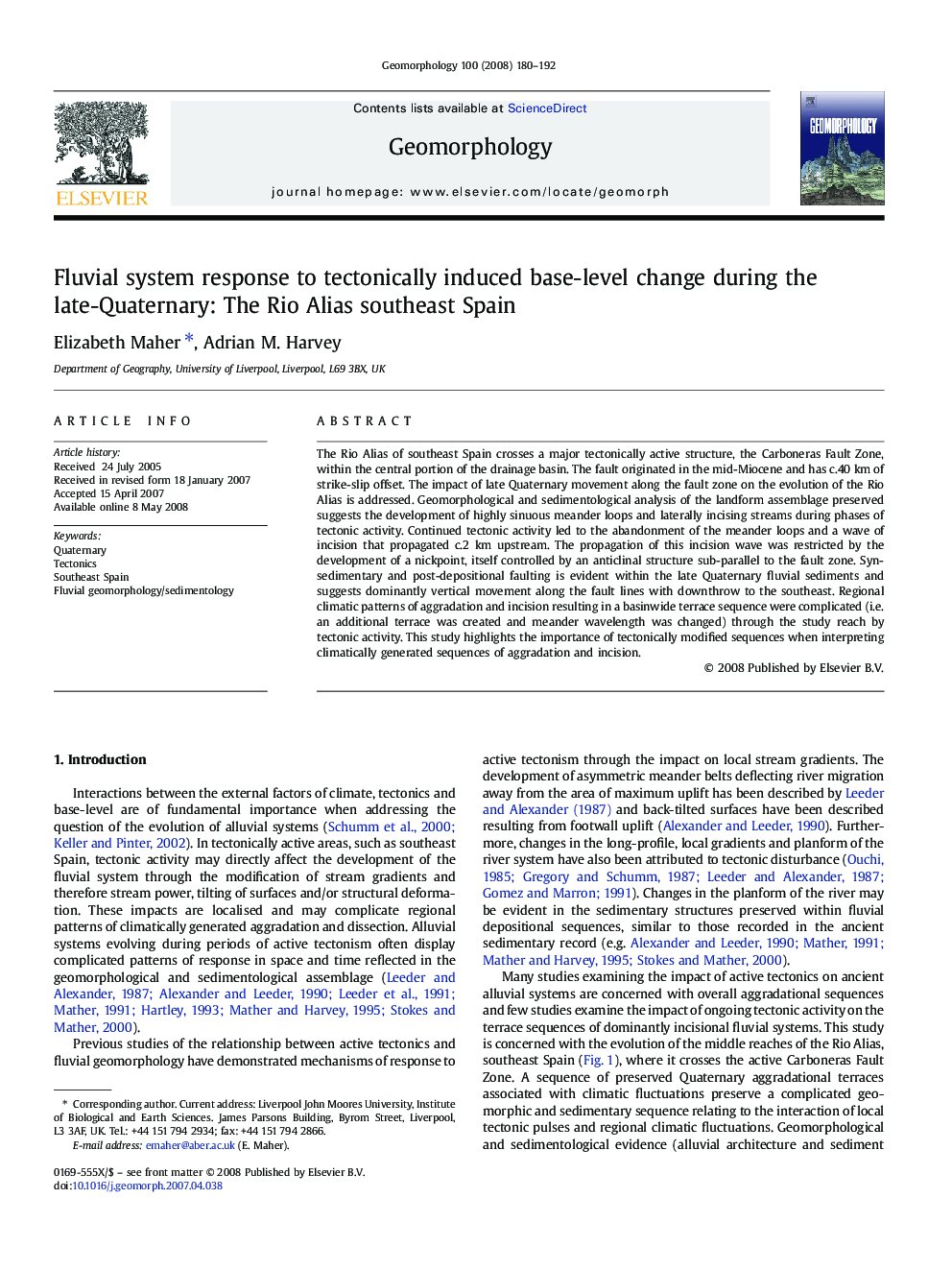| Article ID | Journal | Published Year | Pages | File Type |
|---|---|---|---|---|
| 4686679 | Geomorphology | 2008 | 13 Pages |
The Rio Alias of southeast Spain crosses a major tectonically active structure, the Carboneras Fault Zone, within the central portion of the drainage basin. The fault originated in the mid-Miocene and has c.40 km of strike-slip offset. The impact of late Quaternary movement along the fault zone on the evolution of the Rio Alias is addressed. Geomorphological and sedimentological analysis of the landform assemblage preserved suggests the development of highly sinuous meander loops and laterally incising streams during phases of tectonic activity. Continued tectonic activity led to the abandonment of the meander loops and a wave of incision that propagated c.2 km upstream. The propagation of this incision wave was restricted by the development of a nickpoint, itself controlled by an anticlinal structure sub-parallel to the fault zone. Syn-sedimentary and post-depositional faulting is evident within the late Quaternary fluvial sediments and suggests dominantly vertical movement along the fault lines with downthrow to the southeast. Regional climatic patterns of aggradation and incision resulting in a basinwide terrace sequence were complicated (i.e. an additional terrace was created and meander wavelength was changed) through the study reach by tectonic activity. This study highlights the importance of tectonically modified sequences when interpreting climatically generated sequences of aggradation and incision.
